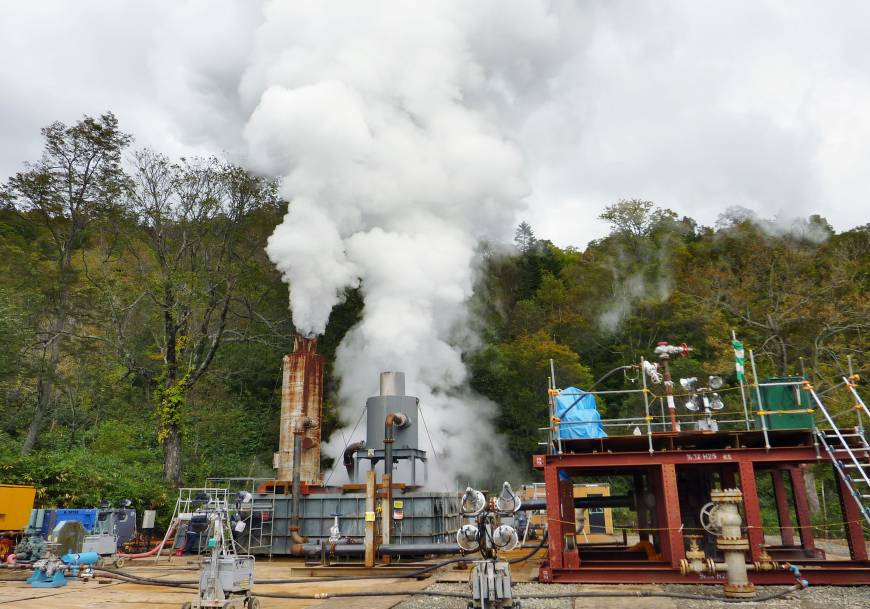
Steam emerges from a well dug to test geothermal power generation in Hokkaido in October 2015. | KYODO
After the 2011 Fukushima disaster, the use of nuclear energy is largely reduced. Japan is eagerly seeking for new clean energy alternative. Onsen (温泉), the popular Japanese hot spring attracts 120 million of people each year is now being considered. As a resource-poor country, Japan ironically owns the world’s third-largest geothermal reserve, approximating to 23 gigawatts of power which is as powerful as 20 nuclear reactors according to International Energy Agency’s geothermal division. With the pressure of reducing carbon emissions as promised during Paris climate talk, the government wishes to triple its current geothermal capacity by 2030. It claims to reduce Japan’s CO2 emissions by 54.7 million tons a year.
However, the representative from Japan Spa Association as well as hot spring owners are very against this idea of expanding geothermal development. They believe this would lower the temperature for their spa and exhaust the volume. Meanwhile, 80% of geothermal resources lies underneath Onsen and natural parks, developing the capacity leads to more drilling inside the natural parks which is not approved by the Environment Ministry. Environment review on expanding drilling area could take up to 9 years. All of these largely hindered the development of Japan’s new clean energy.
“Green” or “Sustainability” in this context has two aspects. On one end, the government should try to reduce their carbon emissions to save the Earth and achieve environmental sustainability. On the other end of the spectrum, government should not overuse the energy and resources so that they are sustainable. Geothermal energy is considered as a renewable energy with almost unlimited amount of heat generated every day. Currently with only 2% of geothermal resources being utilized, the plan of tripling capacity is reasonable to consider.
So far, the above arguments sound as green as it could be from the perspective of Japanese government. Yet the act of trying to expand drilling areas as much as possible without considering the species and animals in natural parks aligns back with the opinion in Kirby’s article, it has demonstrated how meaningless the term sustainability has become in Japan (Kirby, 2011). In the article, the hot spring owners care very much on their economic interests instead of sustainable resources and environmental sustainability, largely shows the Japanese love for nature is meaningless under economic and political context, leads to the question of whether Japan is the green nation.
Last year, Japan spent ¥18.2 trillion importing fossil fuels to power their electricity needs. We could not say the urge of developing new clean energy is either due to their “greenness” or caused by their economic consideration as eventually a country should seek environmental sustainability when economic condition allows. A nation will only be considered green when its citizen truly possesses the love of nature without being affected by religious, cultural, economic and social factors.
(470 words)
Reference
Kirby, P. W. (2011). Troubled natures: waste, environment, Japan. Honolulu, University of Hawai’i Press: 160-192.
This is a relevant news article that gets to some of the central ideas of this module. Not only are there assumptions about what constitutes “green” energy, there are complications of different uses of nature and the added impetus for changes due to the natural/man-made disasters of 3.11. Inevitably, increasing Japan’s geothermal energy output will upset many people and involve many parties. It seems this is the case with all natural resources, which all have multiple parties vying for their control. Just as with forest materials in the Tokugawa period or coal in the Meiji, control of natural resources is frequently a source of conflict.